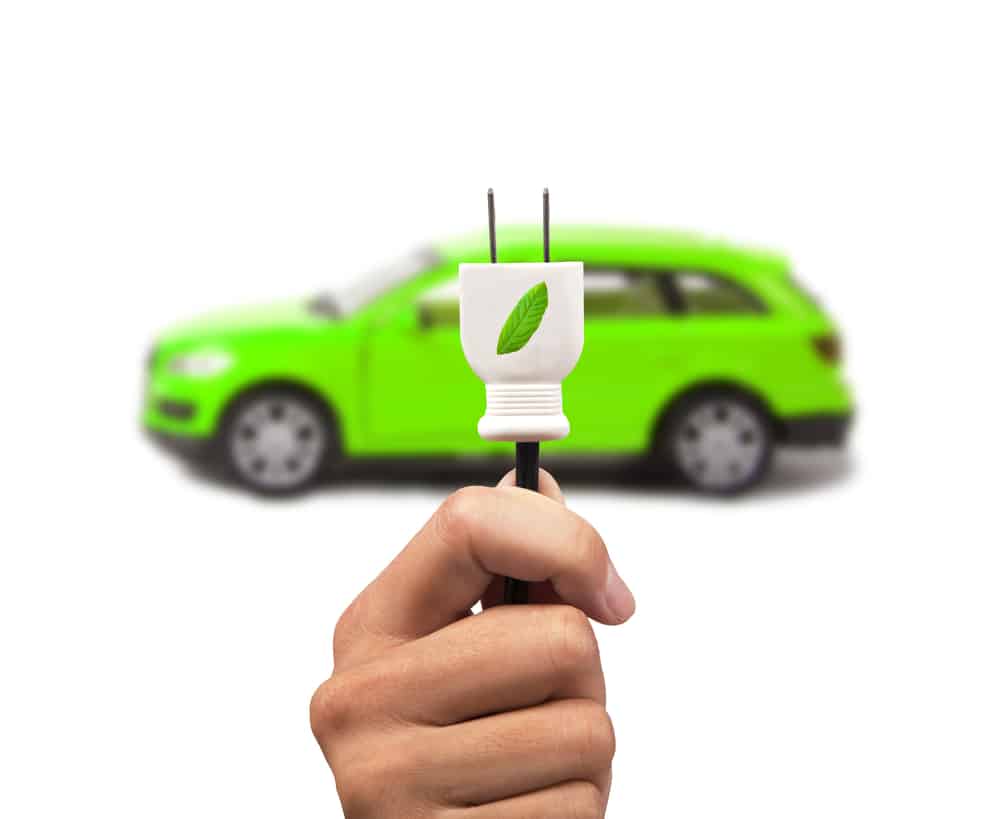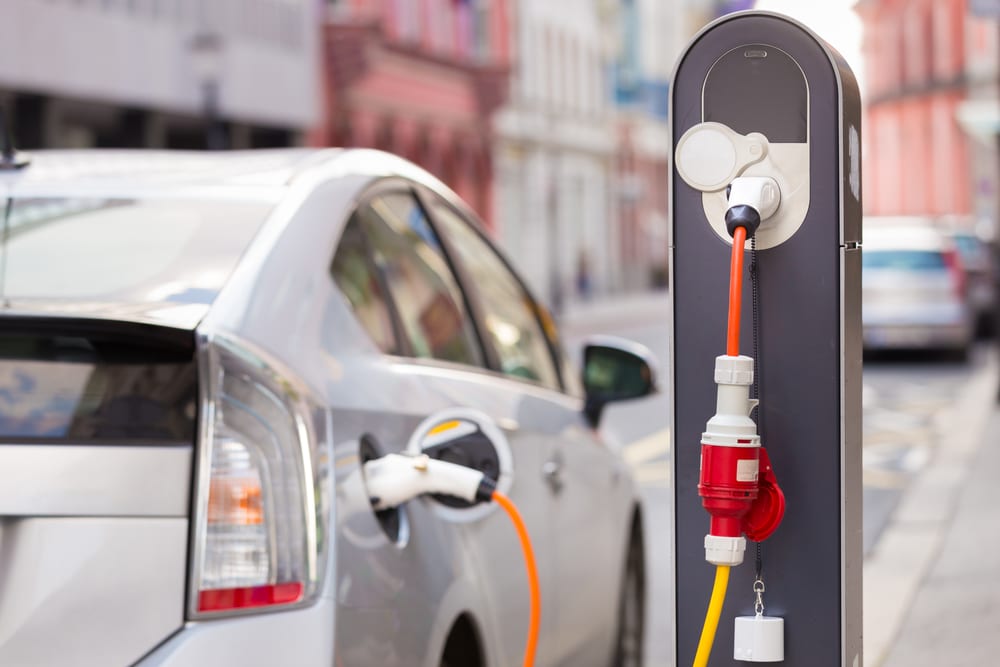If you are looking to do your part to reduce emissions and slow climate change, the Canada Revenue Agency has introduced some great incentives to make it easier to buy zero-emission vehicles, so you can save money on a brand new vehicle and be kind to the environment at the same time!
Transportation is the second-largest source of greenhouse gas emissions in Canada, creating a quarter of Canada’s total emissions with nearly half coming from cars and light trucks. The Government of Canada has committed to decarbonizing the transportation sector and becoming a global leader in Zero-Emission Vehicles (ZEVs), with a goal of 100% of new light-duty sales to be zero-emission by 2035. One way to reduce emissions is to convert to ZEVs .
Canada now has thousands of charging and refuelling stations to make it easier for electric vehicle owners.
To encourage people to further shift towards electric vehicles, the federal government started its Incentives for Zero-Emission Vehicles (iZEV) Program in May 2019, and the program has been extended to March 31, 2025 until available funding is used.
Statistics are available on the iZEV program. As of May 31, 2022, it has $55,265,460 in available funds, but check to confirm current amounts.
Types of Federal Incentives
There are two types of Federal incentive programs available:
- iZEV Program: incentive that reduces the purchase price of eligible vehicles by $2,500 to $5,000
- Tax Incentive for Businesses: an increase to Capital Cost Allowance (CCA) limits so that your business can write-off up to $55,000 in the 1st year
If a business benefits from the iZEV program, it can’t ‘double dip’ and use a tax incentive, too. You must pick one or the other.
iZEV Program Can Help You Save Up to $5,000
Every Canadian is eligible for one iZEV Program incentive per calendar year.
Businesses and provincial/territorial and municipal governments operating fleets are eligible for up to 10 incentives per year.
How much you can receive depends on the range of the vehicle.
In April 2022, the definition of longer-range plug-in hybrid vehicles (PHEVs) changed, and is currently based on electric range (km) instead of kilowatt hours (kwh).
Battery-electric, hydrogen fuel cell, and long-range PHEVs with an electric range of 50 km or more are eligible for $5,000 off of the price.
Short-range PHEVs with ranges under 50 km are eligible for $2,500.
The incentive is applied at the point-of-sale by the dealership and will show on the bill of sale or lease agreement on eligible ZEVs, on or after April 25, 2022. Taxes and fees are applied before the incentive. The dealership will submit the required documentation for reimbursement.
What Vehicles Are Eligible For The iZev Program?

As long as a vehicle appears on the eligible vehicles list, it can qualify. The list of eligible vehicles is updated as cars are added or removed. You can check which vehicles are eligible on the Government of Canada website.
Before listing a vehicle as eligible, Transport Canada confirms it meets all requirements. To be eligible under the iZEV Program, a vehicle must be new, highway-worthy and intended for use on public roads, with at least four working wheels, and meet the Transport Canada Motor Vehicle Safety Standards.
Demo vehicles do count as long as the odometer is below 10,000 km.
ZEVs include any vehicle able to produce no tailpipe emissions; they may have a conventional internal combustion engine but must be able to operate without it (hybrids). You can purchase a fully electric, plug-in hybrid electric, or hydrogen fuel cell vehicle under this program, as all qualify as ZEVs.
The first category is a passenger car with a base model manufacturer’s suggested retail price of under $55,000 and higher-priced versions (after add-on accessories and premium trims) up to $65,000.
The second category includes station wagons, pickup trucks, SUVs, minivans, vans, or special purpose vehicles with a base model suggested retail price of below $60,000 and models with additional add-ons up to $70,000.
Leasing Rules Under the iZEV Program
Only vehicles listed on the Canadian Government website are eligible for an incentive when leased for at least 12 months, on or after April 25, 2022.
Leased ZEVs must be leased for a minimum of 12 months, with the amount of incentive being prorated for lengths between 12 and 48 months.
For example, if you lease for 12 months, you will get a quarter of the incentive, and if you lease for 24 months, you will get half the incentive. At 48 months, you qualify for the full incentive.
Additional Provincial and Territorial Incentives
The federal iZEV program incentive is in addition to any provincial or territorial vehicle rebates.
For example, in New Brunswick and Prince Edward Island, you can qualify for a further $5,000 in incentive rebates.
Nova Scotia offers rebates of up to $3,000 for new electric vehicles, $2,000 for used vehicles, and $500 for e-bikes.
British Columbia offers up to $3,000 for new purchases plus some tax incentives.
Combining provincial and federal rebates means excellent savings.
Tax Incentive For Businesses
Sole proprietors and incorporated business owners have the opportunity to claim enhanced CCA limits for zero-emission vehicles acquired after March 18, 2019 and become available for use before 2028.
Before this program, typically business owners could only write off approximately 30% to 40% of the purchase price up to $30,000, spread over several years matching your finance term.
With this tax incentive, CCA limits have been enhanced up to $55,000 which you can write-off in the very 1st year.
But hurry, these limits will phase-out over time:
- 100% after March 18, 2019 and before 2024
- 75% after 2023 and before 2026
- 55% after 2025 and before 2028.
Business Owners, Do I Buy Personally or via Corporation?
As an example, let’s say you buy an EV vehicle for $100,000 before 2024.
Let’s assume you live in Ontario, your personal marginal tax rate is 53%, and your corporate small business tax rate is 12.2%.
The maximum CCA you can claim in year 1 is 100%, up to $55,000.
If you buy this car personally and claim it on your personal tax return, you can potentially save up to $29,150 in personal taxes.
If you buy this car in your corporation and claim it on your corporate tax return, you can potentially save up to $6,710 in corporate taxes.
Sole proprietors only have one option: buy the car personally.
Incorporated business owners have two options: buy the car personally or via business.
A discussion with your accountant, who knows your situation, is highly recommended to ensure proper tax planning is done to maximise tax savings.
Conclusion
Buying a zero-emission vehicle is expensive, but with the iZEV to reduce the actual purchase price, now may be the time to make the move to clean technology vehicles.
The iZEV Program and Provincial incentive programs reduce the financial barriers, so make sure to take advantage when looking for a new car.
For business owners, consult with your accountant before purchasing the vehicle to decide whether to buy the vehicle personally or via your business.
Remember, that if a business benefits from the iZEV Program, it cannot ‘double dip’ and use the tax incentive for businesses, too. It’s one or the other.
End result? You can save $2,500 or as much as $29,150 buying a zero-emission vehicle.
- Business Overhead Insurance: What it is & Why You Need It - October 18, 2024
- How Long Do I Need to Keep Receipts? - October 5, 2024
- What is the Canada Child Benefit? - September 27, 2024



Hi
Do the Toyota Rav 4 hybrid models qualify for izev ?
If I purchase the Ford lightening personally and pay cash, can I claim $55,000 of the purchase amount against this years personal taxes ?
I live and work in B.C
No. Vehicles purchased for personal use are never deductible from personal income tax as a general rule.
Is there a requirement for how long you have to own the vehicle for to be eligible for the incentive?
If I register a business today, with 14 calendar days left in 2023, can I still claim 100% of the cost, or has my business not been registered long enough? Secondly, what if my business fails in two to three years?
Hi, I purchased a Tesla Y in June 2023 under my business. The price tag was 60K HST.
Can I claim 100% of the 2023 corporate tax?
Bought a PHEV TUSCON in 2023 and sadly discovered when researching with CRA for CCA under class 54, that since I innocently took the $5,000 rebate upon the purchase, I loose the AIIP of 100% 1st yr write off for that otherwise qualifying vehicle. My CCA is treated like my other class 10.1 vehicle. In 2023 my 1st year of ownership, I only get an approx CCA claim of $7,000 and change, times my business use % instead of an immediate 100% CCA write off of $55,611 if the sales person was better informed/educated and had warned me of the huge cost to take the easy $5,000 when I was running a small business and using that SUV. To add insult to injury, CRA’s 2 higher level agents had to do a lot of research to confirm what I discovered on my own and the $5,000 has to be applied against the UCC NEXT year which is sad.
Hi Rob,
Sorry to hear that since you bought it in 2023 at a perfect time! I’m also researching on this topic because thinking of getting one this year as a sole proprietor. If the 5,000 federal incentive is taken, I can only claim CCA under Class 10.1, correct? And what you do mean at the end that the 5,000 has ‘to be applied against the UCC NEXT year’? Would really appreciate any help… this seems to be a very ambiguous issue…
Hey everyone – can you guys enlighten me as to what’s stopping someone from buying multiple cars, claiming the CCA, and then reselling the car at a profit? How does the govt regulate this?
If I buy a EV for 40k in 2024, I can claim accelerated CCA of 75% for the 1st year. How is CCA calculated in this situation for the second year and going forward?
Thanks!